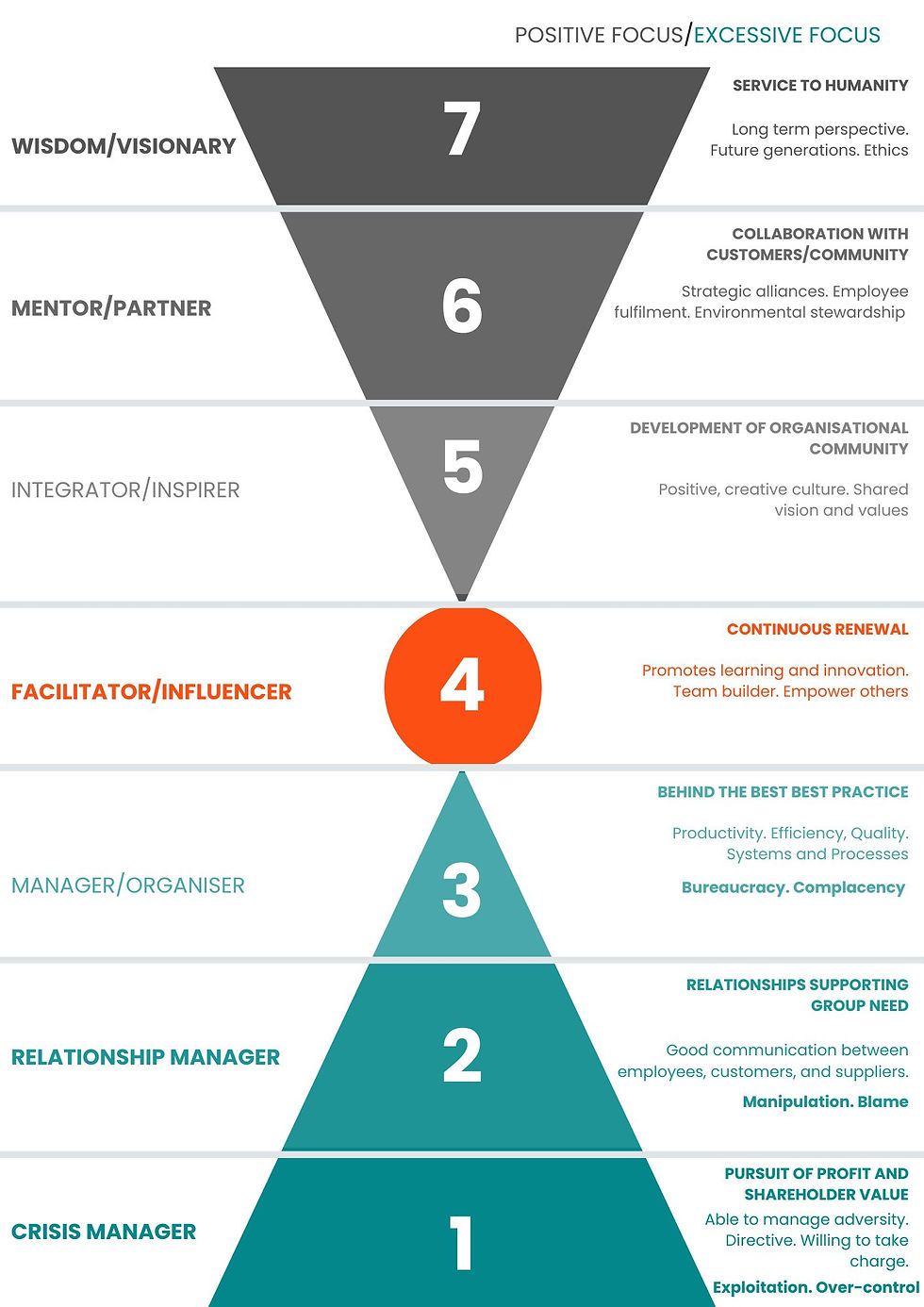A clear business vision and ability to achieve team cohesion through trust and inclusivity

As a strategic finance consultant, I have been advising international businesses for the past six years and had an eighteen-year-long career culminating in CFO roles for tech companies. Over these long years of interactions with business leaders, I have witnessed that very often, confusion tends to overshadow clarity when it comes to business vision and how to achieve this vision.
This short article is directed toward younger entrepreneurs and business leaders and emphasizes the importance of understanding the basics. This understanding is crucial to future business success, ensuring you are informed and prepared for the journey ahead.
A clear business vision

Understanding the significance of a clear business vision is crucial for long-term success. A well-articulated vision goes beyond setting regular business goals and objectives; it encompasses a vivid and compelling picture of the future where the business has achieved remarkable success. This success is not just a possibility but a potential reality that a clear vision can bring, instilling a sense of hope and optimism for the future.
The primary purpose of having a clear vision is to cultivate the motivation to pursue something truly transformative in the lives of others. It serves as a guiding light, inspiring and aligning the efforts of everyone in the organization toward a common goal.
This alignment of efforts should make business leaders feel united and cohesive. Once the vision is established, the next crucial step is to translate this vision into actionable steps. This involves 'working backward from a win,' where the vision is the ultimate win or end goal.
Like mapping the route to a summit by a team of mountaineers, working backward from the vision allows us to identify the specific objectives and milestones that need to be achieved in the coming years. We create a roadmap that guides our strategic decision-making and resource allocation by breaking down the grand vision into tangible, achievable steps. This strategic approach not only helps in discarding unnecessary actions but also encourages unconventional thinking, leading to the adoption of new, innovative strategies that propel the business toward its envisioned future.
Ultimately, developing a clear and compelling vision and working backward from it is essential for taking meaningful actions in the present. It provides a sense of purpose, direction, and clarity for everyone involved in the business, serving as a critical exercise that shapes the organization's future trajectory.
The relevance of showing care
Demonstrating care is fundamental for leaders to connect with their team members. The importance of demonstrating care as a leader cannot be overstated. It is essential to show your team that you genuinely care about their well-being and success. Here are five detailed leadership habits that will help you convey your care for your team members. By prioritizing these detailed leadership habits, you can show your team that you genuinely care about their well-being and success on a daily basis.

1. First and foremost, being available is crucial. As a leader, scheduling dedicated time to communicate without distractions with your direct reports, managers, and those you work with closely is essential. Merely being physically present is not enough to have meaningful conversations. It is essential to schedule weekly meetings. However, for maximum value addition, keep your meeting sessions limited to 15 minutes to ensure that discussions are focused and productive.

2. Secondly, listening empathetically is essential. When your team members speak, giving them your undivided attention is vital. Actively listen and put yourself in their shoes to understand their message and feelings. It's important to suspend your judgments and acknowledge their emotions, even if they seem irrational. Additionally, asking open-ended questions, allowing emotions to settle, and reflecting on their feelings and words will demonstrate your empathetic listening skills.

3. Furthermore, giving respect is crucial. The Latin origin of the word "respect" translates to "look back at or to have consideration for." Therefore, as a leader, it's essential to acknowledge and appreciate your team members' positive contributions and efforts. Providing feedback that recognizes their accomplishments and showing consideration for their work will strengthen your relationships with them.

4. Knowing your people is another important aspect of demonstrating care. As a leader, it's essential to understand what your team members value most and what they are grateful for. This knowledge will enable you to engage in meaningful conversations beyond work-related matters, fostering a deeper connection with your team members.

5. Finally, having honest conversations is paramount. Honesty and integrity are essential for building trust with your team. When providing feedback, being empathetic and considerate of your team member's emotional state is essential. Starting an honest conversation by asking for permission and being direct and to the point will help convey your care and build trust with your team.
Creating trust in your team and organization

Creating trust in an organization starts with building trust with oneself. One of the fundamental ways to establish trust is to keep your word consistently. This means following through on commitments and not overcommitting in the first place. Additionally, when starting a task, it's essential to see it through to completion or delegate it while retaining responsibility. Delegating the task without passing on the responsibility ensures accountability and fosters trust within the team.
Punctuality is another crucial aspect of trust-building. Being on time for meetings and appointments communicates respect for others' time and shows they are valued. Conversely, being late can convey a message of disrespect and lack of consideration.
Acknowledging and appreciating the efforts of others is also vital in building trust. Taking the time to recognize and thank individuals for their contributions, no matter how small, demonstrates respect and fosters a positive and trusting environment.
Building an inclusive team

Unconscious biases, socialization, and neurological factors often drive the human tendency to exclude others. However, we must recognize that we are also wired to include. Focusing on our strengths empowers us to create new behaviors that promote inclusivity.
Matthew Lieberman, a renowned social neuroscientist, delves into the intricate workings of the human brain and its evolutionary predisposition to prioritize social connection in his compelling book "Social." He reveals that approximately 50% of our brain is dedicated to this fundamental function, highlighting the profound significance of social interaction in our lives.
In today's increasingly interconnected digital age, we have unprecedented opportunities to understand and connect with people from diverse backgrounds. This has made it increasingly difficult to maintain an "us versus them" mentality, as our interconnectedness exposes us to a rich tapestry of perspectives and experiences. Embracing this interconnectedness, we can continue to build on this positive momentum by practicing our natural strengths to include others.
For instance, we can utilize the power of our eyes to discern and empathize with people's expressions, actively listen with our ears to truly understand others, acknowledge and validate diverse perspectives with our voices, and wholeheartedly embrace empathy and gratitude with our hearts. By recognizing and conscientiously leveraging these innate strengths, we can collectively contribute to creating a more inclusive and supportive team where all individuals feel valued and respected.
Seven levels of leadership consciousness

Richard Barrett founded the Barrett Values Centre in 1997 to advance the understanding of values-driven leadership. His notable contribution to the field is the Seven Levels of Leadership Consciousness model, which provides a comprehensive framework for understanding the evolution of leadership consciousness.
This model builds upon Maslow’s hierarchy of needs and introduces an inverted pyramid to illustrate the progressive journey of leaders toward self-actualization and its profound impact on their organizations and the broader society. It emphasizes the pivotal role of leaders in creating positive change and shaping the culture of their organizations.
The model is structured to be interpreted from the bottom upwards, reflecting the progression of leadership consciousness. At the foundational levels of the pyramid, leaders may exhibit a mix of positive and negative behaviors. While they may excel in meeting performance targets, fostering strong relationships with their teams and stakeholders, and leveraging their expertise, their motivations are often driven by a fear of failure, conflict, or loss of control. Leaders at these levels tend to be inwardly focused, seeking security and stability.
As leaders ascend to the transformative level 4 and beyond, they have effectively resolved internal conflicts. They are deeply committed to reshaping and enhancing the external environment for sustainable, long-term impact. This transition does not signify a complete abandonment of skills and attributes acquired at the lower levels. Instead, it signifies a deep sense of mastery and the strategic use of these skills to propel them toward the next level of leadership consciousness.
Leaders can use this framework to identify their strengths and weaknesses and use it with teams to grasp others' perspectives. Individuals can strive to progress through the levels by engaging in suitable development endeavors.
Published by
✅ Strategic Finance Consultant ✅ ACS SYNERGY ✅ At ACS, we help growth seeking businesses with Finance Transformation, Accounting & Finance Operations, FP&A, Strategy, Valuation, & M&A 🌐 acssynergy.com
Follow the link given below to view this article on LinkedIn:

Comments